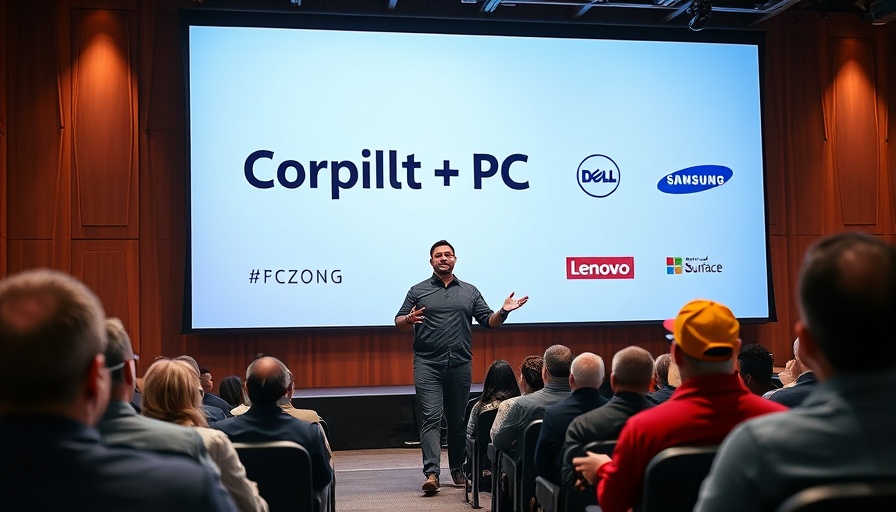
Microsoft's Copilot+ Now Inclusive of All Major Processor Platforms
For many tech enthusiasts and AI lovers, the promise of artificial intelligence-enhanced computing has been exciting yet somewhat frustrating. Microsoft recently took a significant step by expanding its Copilot+ AI tools beyond Qualcomm’s Snapdragon processors to include Intel and AMD devices. This update marks a pivotal moment since Microsoft first unveiled Copilot+—a computing concept designed to integrate AI features closely with hardware capabilities.
What’s New in the Copilot+ Update?
The new features rolling out include Live Captions, Cocreator, Restyle Image, and Image Creator, set to be operational with the upcoming March 2025 Windows update. The Live Captions function is particularly noteworthy, providing real-time captioning capabilities in English and translating text from over 40 languages into English and 27 languages into Chinese. This capability is a game-changer for accessibility, allowing users to engage with content more thoroughly, regardless of language barriers.
The Creative Edge: Enhancing User Experience
On the creative side, the Cocreator feature enhances the Paint app, enabling users to merge text-based commands with hand-drawn artistry. This level of intuitive flexibility may open the floodgates for creative expression, making the artistic process more approachable for individuals of all skill levels. Furthermore, the Restyle Image and Image Creator tools will allow users to generate images from simple text prompts, providing a seamless method to create personalized artistic works, akin to the functionalities provided by tools like ChatGPT.
Why Was There a Delay for Intel and AMD?
Despite fulfilling the AI performance requirements, these features were not initially available for AMD and Intel devices upon the launch of Copilot+. One might question what led to this delay. Many speculate it could be due to supply chain issues or a business strategy focused on propelling Qualcomm ahead of its competitors. Nevertheless, the full spectrum of Copilot capabilities will finally be available to users who prefer Intel and AMD systems. However, as exciting as this expansion is, questions linger about how beneficial Microsoft's affiliation with Qualcomm has been and will continue to be.
Future of AI within Microsoft Ecosystem
Microsoft's updates reflect a growing trend toward integrating innovative technologies into everyday computing experiences. Enhanced capabilities like Voice Access, which allows control of the PC through natural language commands, are already being introduced for Qualcomm chips and are set to reach Intel and AMD devices soon. This feature is a glimpse into what the future holds, where voice and AI will play an integral role in how we interact with technology.
Pros and Cons: Balancing AI Integration
As we embrace these advancements, it’s essential to consider the implications of such technologies. While features like Live Captions and AI-driven creative tools are promising, there are challenges to navigate. For instance, these advancements in AI could lead to concerns about privacy and data security. Furthermore, the reliance on AI-driven solutions may inadvertently stifle human creativity as the technology becomes more entrenched in daily tasks.
Community Reaction: What AI Lovers Think
The community of AI enthusiasts has responded positively to the expansion of Copilot+ features. Many view this as a vital shift toward inclusivity across technology platforms, allowing more users to harness the power of AI tools. Social media buzzes with anticipation for features that can simplify workflows and enhance creativity in various applications. The dialogue around these developments emphasizes a shared desire for continued growth in AI technology that prioritizes user experience and ethics.
Overall, Microsoft’s recent updates show promise for the future of AI in personal computing, but it also raises important questions. As developments unfold, tech enthusiasts and everyday users alike must critically evaluate how these changes impact their interactions with technology. As Microsoft navigates this landscape, it’s essential that users stay informed about the impact of these advancements on everyday computing.
In conclusion, whether you are already using Copilot+ or considering a jump into the world of AI-enhanced features, the updates coming in 2025 are certainly worth exploring. Stay curious, keep experimenting, and for those ready to embrace the AI revolution, dive into Microsoft’s Copilot+ features today!
 Add Row
Add Row  Add
Add 




Write A Comment